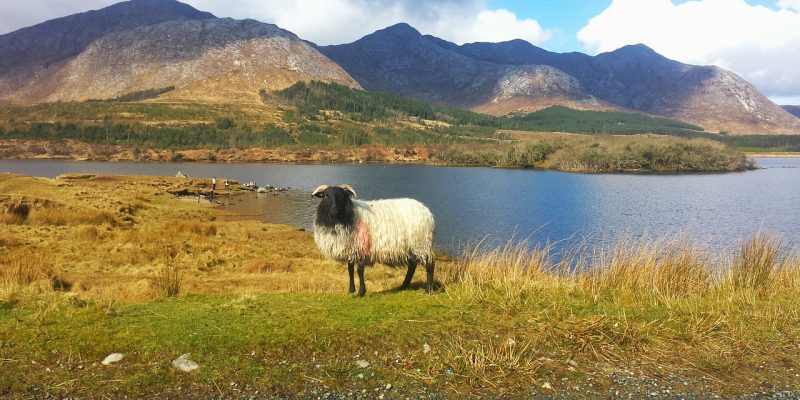Prepare to be amazed as we introduce you to 10 incredible and adorable animals that you probably didn’t even know existed. Get ready to dive into the world of these fascinating creatures and discover their unique characteristics and habitats. From the pangolin, a little-known mammal often referred to as a living pinecone, to the axolotl, an extraordinary amphibian that can regenerate body parts, this article will take you on a journey through the animal kingdom like never before.
But that’s not all! We’ll also introduce you to the quokka, known as the world’s happiest animal, with its friendly and smiley appearance. And let’s not forget about the narwhal, the unicorn of the sea, with its enchanting tusk and social behavior. Plus, we’ll uncover the cuteness of the fennec fox, with its oversized ears and sandy terrain survival skills. And last but not least, we’ll explore the world of the red panda, a bamboo-eating mammal found in the mountainous regions of Asia.
Pangolin
The pangolin is a fascinating creature that often goes unnoticed due to its secretive nature. Known as a “living pinecone,” the pangolin has a unique appearance that sets it apart from other mammals. Its body is covered in scales, which act as a protective armor against predators. These scales are made of keratin, the same material found in human hair and nails. Despite its tough exterior, the pangolin is actually quite gentle and shy.
One of the most interesting habits of the pangolin is its feeding behavior. It primarily eats ants and termites, using its long, sticky tongue to capture its prey. The pangolin’s tongue can be longer than its body, allowing it to reach deep into ant nests and termite mounds. It also has sharp claws that it uses to break open the nests and extract the insects. This unique feeding adaptation makes the pangolin a valuable asset in controlling insect populations.
In addition to its feeding habits, the pangolin has some other remarkable characteristics. It has a strong sense of smell, which it uses to locate its prey. It also has excellent hearing and can detect the slightest movements of insects underground. The pangolin is primarily nocturnal, meaning it is most active at night. During the day, it seeks shelter in burrows or hollow trees to avoid predators.
Unfortunately, the pangolin is facing numerous threats, including habitat loss and illegal wildlife trade. Its scales are highly valued in some cultures for their supposed medicinal properties, leading to poaching and trafficking of these animals. Conservation efforts are underway to protect the pangolin and raise awareness about its ecological importance. It is crucial that we work together to ensure the survival of this unique and adorable creature.
living pinecone.
The pangolin is a fascinating and adorable animal that you may not have heard of before. Often referred to as a “living pinecone,” this little-known mammal has unique characteristics and habits that make it truly remarkable.
With its scaly exterior and long snout, the pangolin resembles a walking artichoke. It is the only mammal covered in scales, which act as a protective armor against predators. These scales are made of keratin, the same material found in human hair and nails. When threatened, the pangolin curls up into a tight ball, using its scales as a shield.
One of the most interesting features of the pangolin is its diet. It primarily feeds on ants and termites, using its long, sticky tongue to capture its prey. In fact, the pangolin can consume up to 70 million insects in a single year! It has no teeth, so it relies on its strong stomach muscles and the help of small stones swallowed for grinding its food.
Unfortunately, pangolins are facing numerous threats, including habitat loss and illegal wildlife trade. They are highly sought after for their scales, which are used in traditional medicine. Conservation efforts are crucial to protect these unique creatures and ensure their survival in the wild.
The world is full of amazing and adorable animals that often go unnoticed. In this article, we will introduce you to ten fascinating creatures that you may not have heard of before. From the unique pangolin to the adorable red panda, each of these animals has its own special characteristics and habits that make them truly remarkable.
First on our list is the pangolin, a little-known mammal often referred to as a living pinecone. With its scaly armor and long tongue, the pangolin is a master of survival in the wild. Next, we have the axolotl, an extraordinary amphibian that retains its juvenile features throughout its life and has the incredible ability to regenerate body parts. These creatures are like something out of a science fiction movie!
Now, let’s talk about the quokka, which has earned the title of the world’s happiest animal. With its friendly and smiley appearance, the quokka has become an internet sensation, especially with the rise of quokka selfies. However, it’s important to remember the conservation efforts needed to protect these adorable creatures from the negative impacts of tourism.
Another fascinating creature is the narwhal, often referred to as the unicorn of the sea. With its unique tusk and social behavior, the narwhal is a true marvel. And let’s not forget about the fennec fox, a small desert-dwelling mammal with oversized ears that help it stay cool and locate prey in the sandy terrain.
Lastly, we have the red panda, a bamboo-eating mammal found in the mountainous regions of Asia. With its striking coat and bushy tail, the red panda is a sight to behold. These adorable animals are just a few examples of the incredible diversity found in the animal kingdom.
Axolotl
Get ready to dive into the fascinating world of the axolotl, an extraordinary amphibian that will leave you in awe. Known for its unique characteristics, the axolotl is truly one-of-a-kind.
One of the most remarkable features of the axolotl is its ability to retain its juvenile features throughout its entire life. While most amphibians undergo metamorphosis and transform into their adult form, the axolotl remains in its larval stage, retaining its gills and aquatic lifestyle. This gives it a cute and endearing appearance that has captured the hearts of many.
But that’s not all that makes the axolotl special. It possesses an incredible superpower – the ability to regenerate body parts. If an axolotl loses a limb or sustains an injury, it can regrow the missing body part with astonishing precision. This remarkable ability has fascinated scientists for years and has made the axolotl a subject of extensive research.
The axolotl’s regenerative abilities extend beyond just limbs. It can also regenerate its spinal cord, heart, and even parts of its brain. This makes it a valuable model organism for studying tissue regeneration and potential applications in regenerative medicine.
Native to the ancient lakes of Mexico, the axolotl is a true living marvel. Its unique characteristics and regenerative abilities have made it a beloved creature among biologists and nature enthusiasts alike. So, if you’re looking to explore the extraordinary world of amphibians, the axolotl is a perfect place to start.
Quokka
The quokka is a small marsupial that has gained fame for its friendly and smiley appearance, earning it the title of the world’s happiest animal. Native to the southwestern part of Australia, the quokka is often referred to as the “happiest animal on Earth” due to its perpetually cheerful expression. With its round face, small size, and adorable features, it’s hard not to be captivated by this lovable creature.
The quokka is about the size of a domestic cat, with a body length of around 16-21 inches and a weight of 6-11 pounds. It has a compact build, short legs, and a tail that is about a third of its body length. Its fur is coarse and sandy in color, which helps it blend in with its natural habitat. The most distinctive feature of the quokka is its friendly and approachable facial expression, which has made it a popular subject for selfies.
Despite its cute and friendly appearance, the quokka is a wild animal and should be treated with respect and caution. It is a herbivorous marsupial, primarily feeding on grasses, leaves, and other vegetation. The quokka is primarily nocturnal, spending its days resting in shady areas and becoming more active at night to forage for food. It is also a skilled climber and can often be found perched on tree branches or rocks.
The quokka has faced various threats to its population, including habitat loss and predation by introduced species. Efforts are being made to protect the quokka and its habitat, including the establishment of protected areas and research projects. It is important to raise awareness about the quokka and promote responsible tourism to ensure the long-term survival of this adorable marsupial.
world’s happiest animal.
The world’s happiest animal, the quokka, is a small marsupial native to Western Australia. Known for its friendly and smiley appearance, the quokka has captured the hearts of people around the world. Its adorable face and joyful expression have earned it the title of the world’s happiest animal.
The quokka’s unique and endearing features have made it a social media sensation, with people flocking to Rottnest Island to take selfies with these cute creatures. The trend of quokka selfies has brought attention to the conservation efforts aimed at protecting these marsupials and their natural habitat.
Despite their seemingly constant smile, quokkas face numerous threats to their survival. Habitat loss, predation by introduced species, and the negative impacts of tourism are some of the challenges they face. Conservation initiatives have been put in place to protect the quokka population, including the establishment of protected areas and research projects to better understand their behavior and needs.
By raising awareness about the world’s happiest animal and supporting conservation efforts, we can ensure that future generations will continue to be delighted by the adorable quokka and its contagious smile.
Discover fascinating and cute animals that you may not have heard of before.
Welcome to the world of amazing and adorable animals! In this article, we will take you on a journey to explore some of the most fascinating creatures that you may not have known existed. Get ready to be surprised and delighted by the unique characteristics and habits of these extraordinary beings.
First up, let’s meet the pangolin. This little-known mammal is often referred to as a living pinecone due to its scaly exterior. With its long snout and sticky tongue, the pangolin is a master at finding ants and termites, which make up its diet. Learn more about the pangolin’s unique features and habits as we delve deeper into its world.
Next on our list is the axolotl, an amphibian that seems to have come straight out of a fairytale. This extraordinary creature retains its juvenile features throughout its life, giving it a permanently cute appearance. Not only that, but the axolotl also possesses the incredible ability to regenerate body parts, making it a true marvel of nature.
Now, let’s talk about the quokka, a small marsupial that has earned the title of the world’s happiest animal. With its friendly and smiley appearance, the quokka has captured the hearts of people all over the world. We will uncover the secrets behind the quokka’s joyful demeanor and also discuss the viral trend of taking selfies with these adorable creatures.
Dive into the enchanting world of narwhals, the unicorns of the sea. These majestic creatures inhabit the Arctic and are known for their unique tusk, which can grow up to 10 feet long. Discover the social behavior and habitat of narwhals as we explore their fascinating world.
Prepare to be charmed by the fennec fox, a small desert-dwelling mammal with oversized ears that help it stay cool in the scorching heat. These adorable creatures are also skilled hunters, using their keen senses to locate prey in the sandy terrain. Learn more about the fascinating adaptations of the fennec fox.
Last but not least, let’s uncover the cuteness of the red panda. With its striking coat and bushy tail, the red panda is a true beauty. Found in the mountainous regions of Asia, these bamboo-eating mammals are a sight to behold. Join us as we delve into the world of red pandas and discover their unique characteristics.
Now that you have a glimpse of what’s in store, get ready to embark on a journey filled with surprises and explosions of cuteness. From the pangolin to the red panda, each animal has its own story to tell. So, buckle up and let’s dive into the fascinating world of these amazing and adorable creatures.
Narwhal
Dive into the enchanting world of narwhals, the unicorns of the sea. These magnificent creatures are known for their unique tusk, which can grow up to 10 feet long. The tusk is actually a long, spiral tooth that protrudes from the narwhal’s upper jaw. It is believed that the tusk is used for various purposes, including mating rituals and navigation.
Narwhals are social animals and can be found in groups called pods. They inhabit the Arctic waters, particularly around Canada, Greenland, and Russia. These cold and icy environments provide the perfect habitat for narwhals, as they are well-adapted to survive in extreme conditions.
| Unique Tusk | Social Behavior | Habitat |
|---|---|---|
| The narwhal’s tusk is a long, spiral tooth that can grow up to 10 feet long. It is believed to be used for various purposes, including mating rituals and navigation. | Narwhals are social animals and can be found in groups called pods. They exhibit cooperative behavior and often travel, feed, and migrate together. | Narwhals inhabit the Arctic waters, particularly around Canada, Greenland, and Russia. They are well-adapted to survive in cold and icy environments. |
These majestic creatures have fascinated scientists and researchers for centuries. Their unique tusk and mysterious behavior have sparked numerous studies and debates. Despite their elusive nature, narwhals have become icons of the Arctic and continue to capture the imaginations of people around the world.
unicorns of the sea,
Dive into the enchanting world of narwhals, the unicorns of the sea. These fascinating creatures inhabit the Arctic waters and are known for their unique tusk, which can grow up to 10 feet long. The narwhal’s tusk is actually a specialized tooth that protrudes from the upper jaw of males. It is believed to be used for various purposes, including mating displays and as a sensory organ to detect changes in the environment.
Narwhals are social animals and typically travel in groups called pods. These pods can consist of anywhere from a few individuals to several hundred. They are highly adapted to their icy habitat, with a thick layer of blubber to keep them warm and a streamlined body shape that allows them to navigate through the water with ease. Narwhals primarily feed on fish and squid, using their tusk to stun their prey before consuming it.
Despite their mythical appearance, narwhals are very much real and are an important part of the Arctic ecosystem. However, they face various threats, including climate change and habitat loss. Conservation efforts are underway to protect these majestic creatures and ensure their survival for future generations to admire and appreciate.
and learn about their unique tusk, social behavior, and habitat in the Arctic.
Dive into the enchanting world of narwhals, the unicorns of the sea, and discover their fascinating features, social behavior, and Arctic habitat. These remarkable marine mammals are known for their long, spiral tusks, which can reach lengths of up to 10 feet. Contrary to popular belief, the narwhal’s tusk is actually a specialized tooth that grows through the upper lip of adult males. Scientists believe that the tusk is primarily used for mating rituals and as a sensory organ to navigate through icy waters.
Narwhals are highly social creatures and can be found in groups called pods. These pods can consist of anywhere from a few individuals to hundreds of narwhals. They communicate with each other through a series of clicks, whistles, and other vocalizations, allowing them to coordinate activities such as hunting and migration.
As for their habitat, narwhals are primarily found in the Arctic waters of Canada, Greenland, Russia, and Norway. They are well-adapted to this extreme environment, with a thick layer of blubber to insulate them from the cold and a streamlined body shape that enables them to navigate through the icy waters with ease. They are also capable of diving to great depths, reaching depths of up to 5,000 feet in search of their preferred prey, which includes fish, squid, and shrimp.
In conclusion, narwhals are truly fascinating creatures with their unique tusk, intricate social behavior, and ability to thrive in the Arctic habitat. Exploring their world is like delving into a magical realm where nature’s wonders never cease to amaze.
Fennec Fox
Discover the adorable fennec fox, a small desert-dwelling mammal with oversized ears that help it stay cool and locate prey in the sandy terrain.
The fennec fox is truly a remarkable creature. With its striking appearance and unique adaptations, it has captured the hearts of animal lovers around the world. This small mammal, native to the Sahara Desert, is known for its distinctive feature – its oversized ears. These ears serve a crucial purpose in the fennec fox’s survival in the harsh desert environment.
The fennec fox’s large ears are not just for show; they play a vital role in regulating its body temperature. The desert can be scorching hot during the day and freezing cold at night. The fennec fox’s ears act as efficient radiators, helping it dissipate excess heat and stay cool under the blazing sun. Additionally, the large surface area of the ears allows for enhanced heat loss through radiation.
But that’s not all. The fennec fox’s ears also aid in its hunting abilities. The sandy terrain of the desert can make it challenging for the fox to locate its prey. However, its exceptional hearing, combined with the large ears, allows it to detect even the faintest sounds made by its potential meals. Whether it’s a scurrying rodent or an insect burrowing beneath the sand, the fennec fox’s ears give it a distinct advantage in finding its next meal.
Despite its small size, the fennec fox has adapted remarkably well to its desert habitat. Its large ears not only serve as a means of survival but also add to its adorable appearance. These captivating creatures continue to fascinate researchers and animal enthusiasts alike, reminding us of the incredible diversity and beauty of the animal kingdom.
Red Panda
The red panda is an incredibly adorable creature that captures the hearts of many with its cute appearance. This small mammal, native to the mountainous regions of Asia, is known for its striking coat and bushy tail. Its reddish-brown fur with white markings makes it stand out in its natural habitat.
One of the most fascinating aspects of the red panda is its diet. It primarily feeds on bamboo, making it a bamboo-eating mammal. This unique adaptation sets it apart from other animals and showcases its specialized niche in the ecosystem. The red panda’s diet consists mainly of bamboo leaves, shoots, and stems, which it skillfully grasps with its dexterous paws.
Not only is the red panda’s appearance captivating, but its behavior is also intriguing. It is a solitary animal, preferring to spend most of its time alone in the trees, where it feels safe. The red panda is a skilled climber, using its sharp claws and long tail for balance as it navigates through the branches.
In addition to its physical characteristics, the red panda has a gentle and docile nature. It is known for its calm and relaxed demeanor, rarely showing aggression. This peaceful disposition adds to its charm and makes it a beloved animal among nature enthusiasts.
Unfortunately, the red panda is classified as an endangered species due to habitat loss and poaching. Conservation efforts are crucial to protect these adorable creatures and ensure their survival in the wild. Initiatives such as the establishment of protected areas and research projects are essential for the preservation of the red panda’s habitat and population.
In conclusion, the red panda is a fascinating and cute animal found in the mountainous regions of Asia. Its striking coat, bushy tail, and bamboo-eating habits make it a unique and captivating creature. However, its endangered status highlights the importance of conservation efforts to safeguard the red panda’s future.
Quokka
Quokka, a small marsupial native to Australia, is known for its friendly and smiley appearance, earning it the title of the “world’s happiest animal.” These adorable creatures have captured the hearts of people around the globe with their charming expressions and playful nature.
The quokka belongs to the macropod family, which also includes kangaroos and wallabies. They have a compact body with short legs and a round face that seems to be constantly smiling. Their fur is coarse and varies in color from gray to brown, with lighter shades on their undersides. Quokkas have a pouch like other marsupials, where they carry and nurse their young, known as joeys.
One of the most fascinating aspects of quokkas is their friendly and curious nature. They are not afraid of humans and are often seen approaching visitors, making them a popular attraction on Rottnest Island in Western Australia. Quokkas are herbivores and primarily feed on grasses, leaves, and stems. They have adapted to survive in harsh environments by being able to extract moisture from their food, allowing them to thrive in areas with limited water sources.
Despite their seemingly carefree and happy demeanor, quokkas face numerous challenges in the wild. Habitat loss, predation by introduced species, and the impact of tourism are major threats to their survival. Efforts are being made to protect these adorable creatures, including the establishment of protected areas and research projects aimed at understanding their behavior and habitat requirements.
In conclusion, the quokka is a remarkable marsupial known for its friendly and smiley appearance. Their unique characteristics and interactions with humans have earned them the reputation of being the “world’s happiest animal.” However, it is crucial to ensure their conservation and protect their habitat to secure the future of these delightful creatures.
world’s happiest animal.
The quokka, also known as the world’s happiest animal, is a small marsupial native to Western Australia. With its friendly and smiley appearance, it has captured the hearts of people around the world. These adorable creatures have earned the title of the world’s happiest animal due to their perpetually cheerful expression, which seems to be a permanent smile on their face.
The quokka’s unique and endearing appearance has made it an internet sensation, with many people flocking to Rottnest Island in Western Australia to take selfies with these cute creatures. The trend of quokka selfies has gained popularity on social media, as people are drawn to the charm and joy exuded by these little marsupials.
However, it is important to note that while quokkas may appear friendly and approachable, they are still wild animals and should be treated with respect. It is crucial to maintain a safe distance and not disturb their natural behavior or habitat.
Efforts are being made to protect the quokkas from the negative impacts of tourism. Conservation initiatives include the establishment of protected areas and research projects to better understand their habitat and population dynamics. By raising awareness and promoting responsible tourism, we can ensure the long-term survival and well-being of these adorable creatures.
The world is full of fascinating and adorable animals that often go unnoticed. In this article, we will take a closer look at some of these amazing creatures that you may not have heard of before. From the unique characteristics of the pangolin to the friendly and smiley appearance of the quokka, prepare to be amazed by the diversity of the animal kingdom.
First on our list is the pangolin, a little-known mammal often referred to as a living pinecone. These creatures are covered in scales, which serve as a protective armor against predators. Pangolins are also excellent climbers and can use their long, sticky tongues to catch ants and termites. Their peculiar appearance and behavior make them truly one-of-a-kind.
Next up is the axolotl, an extraordinary amphibian that retains its juvenile features throughout its life. This means that it never undergoes metamorphosis and remains in its larval form. Axolotls also have the remarkable ability to regenerate body parts, making them a subject of scientific interest. With their cute and quirky appearance, these amphibians are sure to capture your heart.
Now, let’s talk about the quokka, a small marsupial known for its friendly and smiley appearance. In fact, it has earned the title of the world’s happiest animal. Quokkas are native to Australia and can be found on Rottnest Island. They have become famous for their adorable selfies with tourists. However, it is important to protect these creatures and ensure their conservation in the face of increased tourism.
Continuing our journey, we encounter the narwhal, often referred to as the unicorns of the sea. These majestic creatures inhabit the Arctic waters and are known for their long tusks, which are actually elongated canine teeth. Narwhals are highly social animals and live in tight-knit groups called pods. Dive into the enchanting world of narwhals and discover their unique features and behaviors.
Our next adorable animal is the fennec fox, a small mammal that calls the desert its home. With its oversized ears, the fennec fox is not only cute but also functional. These ears help the fox stay cool in the scorching desert heat and locate prey in the sandy terrain. Their adaptability to extreme environments is truly remarkable.
Last but not least, we have the red panda, a bamboo-eating mammal found in the mountainous regions of Asia. With its striking coat and bushy tail, the red panda is often compared to a miniature version of the giant panda. These adorable creatures spend most of their time in trees and are known for their agile climbing skills.
Now that you have been introduced to these amazing and adorable animals, prepare to dive deeper into their world. In the following sections, we will explore each animal in more detail, learning about their habits, habitats, and the efforts being made to protect them. Get ready for a journey filled with surprises and explosions of cuteness!
Quokka Selfies
One of the most fascinating aspects of quokkas is their friendly and smiley appearance, which has led to a viral trend of taking selfies with these adorable creatures. People from all over the world flock to Rottnest Island in Western Australia, where the majority of quokkas reside, to capture the perfect quokka selfie.
This trend has gained significant popularity on social media platforms, with countless photos of people posing with quokkas flooding the internet. The quokka’s photogenic nature and seemingly happy demeanor make them irresistible subjects for selfies.
However, it is important to note that while quokka selfies may be fun and entertaining, there are efforts in place to protect these creatures from the negative impacts of tourism. Strict guidelines have been implemented to ensure the safety and well-being of the quokkas during these interactions.
Tourists are advised to maintain a safe distance from the quokkas, as they are wild animals and should not be disturbed or fed. Feeding quokkas can disrupt their natural diet and lead to health issues. Additionally, visitors are encouraged to avoid using flash photography, as it can startle and distress the quokkas.
Conservation organizations and local authorities are actively working to educate visitors about responsible interactions with quokkas and the importance of preserving their natural habitat. By raising awareness and promoting sustainable tourism practices, these efforts aim to protect the quokkas and ensure their long-term survival.
Quokka Conservation
Quokka conservation is of utmost importance to ensure the survival of these adorable creatures. Various initiatives have been implemented to protect their habitat and population, with a focus on creating protected areas and conducting research projects.
One of the key conservation efforts is the establishment of protected areas where quokkas can thrive without disturbance. These areas are carefully managed to provide a safe and suitable environment for the quokkas to live and reproduce. By limiting human interference and protecting their natural habitat, these initiatives aim to maintain a sustainable population of quokkas.
In addition to protected areas, research projects play a crucial role in understanding the behavior, ecology, and conservation needs of quokkas. Scientists and conservationists conduct studies to gather valuable information about their habitat requirements, breeding patterns, and potential threats. This knowledge helps in formulating effective conservation strategies and implementing measures to mitigate any risks to the quokkas.
Furthermore, public awareness campaigns and education programs are conducted to promote the conservation of quokkas. By raising awareness about the importance of protecting these unique marsupials, efforts are made to encourage responsible tourism and reduce the negative impacts on their habitat.
Overall, the conservation initiatives for quokkas aim to ensure the long-term survival of these charismatic animals by preserving their habitat, monitoring their population, and raising awareness about their conservation needs.
Discover fascinating and cute animals that you may not have heard of before. In this article, we will take a closer look at 10 amazing and adorable animals that will surely surprise you. From the unique characteristics of the pangolin to the smiley appearance of the quokka, these animals are truly a wonder of nature.
Let’s start with the pangolin, a little-known mammal often referred to as a living pinecone. This fascinating creature has a scaly exterior that acts as a natural armor, protecting it from predators. With its long tongue and strong claws, the pangolin is an expert at finding ants and termites, which make up the majority of its diet. Despite its incredible adaptations, the pangolin is unfortunately facing threats due to illegal hunting and habitat loss.
Next, we have the axolotl, an extraordinary amphibian that retains its juvenile features throughout its life. This cute creature has the ability to regenerate body parts, making it a true marvel of nature. Found in the lakes of Mexico, the axolotl is an important symbol of conservation efforts as its population has been declining in recent years. Scientists are studying the axolotl’s regenerative abilities in the hopes of applying it to human medicine.
Now, let’s move on to the quokka, known as the world’s happiest animal. This small marsupial has a friendly and smiley appearance that has captured the hearts of many. Found in Western Australia, the quokka has become famous for its adorable selfies with tourists. However, it is important to remember that these animals are wild and should be respected and protected.
Continuing with our list, we have the narwhal, often referred to as the unicorns of the sea. These enchanting creatures inhabit the Arctic and are known for their long tusks, which are actually elongated teeth. Narwhals have a unique social behavior and communicate through a series of clicks and whistles. They rely on the Arctic sea ice for their survival, making them vulnerable to climate change.
Next up is the fennec fox, a small desert-dwelling mammal with oversized ears. These ears not only give them a cute appearance but also help them stay cool in the hot desert climate. Fennec foxes have adapted to the sandy terrain by having fur on the soles of their feet, which protects them from the scorching sand. These adorable creatures are found in the Sahara Desert and are known for their playful nature.
Lastly, we have the red panda, a bamboo-eating mammal found in the mountainous regions of Asia. With its striking coat and bushy tail, the red panda is often compared to a mini version of the giant panda. Despite its name, the red panda is not closely related to the giant panda or the raccoon. These adorable animals are facing threats due to habitat loss and illegal hunting.
In conclusion, these 10 amazing and adorable animals are a testament to the incredible diversity of nature. From the pangolin’s unique armor to the red panda’s striking appearance, each of these creatures has its own special characteristics. It is important for us to appreciate and protect these animals to ensure their survival for future generations.
Frequently Asked Questions
- Q: What is a pangolin?
A: A pangolin is a unique mammal often referred to as a living pinecone. It is known for its scaly armor and long tongue, which it uses to eat ants and termites.
- Q: What is an axolotl?
A: An axolotl is an extraordinary amphibian that retains its juvenile features throughout its life. It has the ability to regenerate body parts and is often kept as a pet.
- Q: What is a quokka?
A: A quokka is a small marsupial known for its friendly and smiley appearance. It has earned the title of the world’s happiest animal due to its joyful expression.
- Q: What is a narwhal?
A: A narwhal is a marine mammal often referred to as the unicorn of the sea. It is known for its long, spiraled tusk and is found in the Arctic waters.
- Q: What is a fennec fox?
A: A fennec fox is a small desert-dwelling mammal with oversized ears. These ears help it stay cool in the hot desert climate and locate prey in the sandy terrain.
- Q: What is a red panda?
A: A red panda is a bamboo-eating mammal found in the mountainous regions of Asia. It has a striking coat and a bushy tail, making it incredibly cute and adorable.
- Q: What are quokka selfies?
A: Quokka selfies are a viral trend where people take photos with quokkas. However, it is important to remember to respect their natural habitat and not disturb them for the sake of selfies.
- Q: What conservation efforts are in place for quokkas?
A: There are various conservation initiatives aimed at preserving the habitat and population of quokkas. These include the establishment of protected areas and research projects to better understand and protect these adorable creatures.









